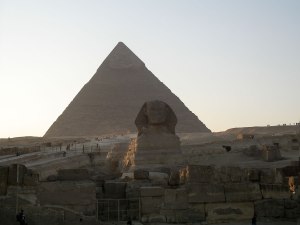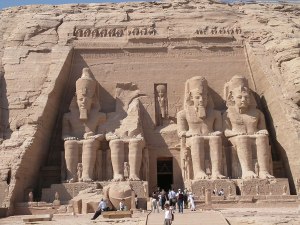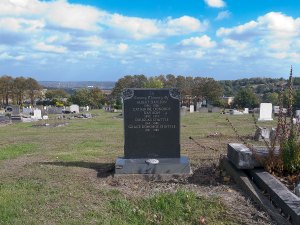What I’m talking about now is a very ancient part of human awareness. It may even be what defines the human – although it [was] largely forgotten in the second half of the 20th century. The dead are not abandoned. They are kept near physically. They are a presence. What you think you’re looking at on that long road to the past is actually beside you where you stand.
(John Berger talking with Philip Maughan for a New Statesman article 11 June 2015 – accessed here)
I was interested in Egypt from being quite small – this strange and exotic place my father wrote to me about. I realise now that he talked mainly in general terms so I only remember the Dead Sea, Bitter Lake and that he saw the Sphinx the ancient and mysterious monolith that guards some of the pyramids. I remember him talking about Nefertiti and scarab beetles but nothing more specific. Of course, these vague allusions allowed my imagination to get to work and build my own version of it which I was able to test in December 2005 when I went to Egypt for ten days, boarding the aeroplane on the 4th December which was apt because that’s my birthday. My dad was with me there somehow and I was wondering whether he’d been to the places I visited; would have loved to have been able to talk to him about it.
On the way to see the Sphinx our guide pointed out a large Cemetery telling us how people lived there amongst the tombs of their ancestors. This was Cairo’s el-Arafa necropolis known as The City of the Dead, which has existed for 700 years or more. Imagine, living amongst the dead with them as daily companions.
It felt strange to be standing on that high plateau overlooking Cairo, with the Sphinx and pyramids at my back. So much history and the stories about those ancient times gleaned from discoveries; piercing together the fragments of hieroglyphics and the journeys of the pharaohs to the Underworld.. So much time, effort and cost devoted to death and what comes after, whilst continuing the social structures and segregation of the living – Valley of the Kings, Queens, high-born nobles and workers.
I’m connecting up dots here – fragments of history, the old photographs I now have that don’t appear to have been in an album at any point and what they stand for in my own life. I’ve spent considerable time delving into genealogy records, searching for links and made some interesting discoveries. What’s happened is that I’ve felt steeped in this family history for quite some time and, after reflection have reached the conclusion that this is because I am researching what makes me ‘me’, how I got to this place in life, with the particular attitudes and values I have that reflect the social and cultural environment that contributed to my self-concept and sense of identity.
If one follows the view that there is only ‘the here and now’ with history as memory and the future imagined then what is the purpose of history? Why do we revere the monuments of the past and, in some instances, literally worship our ancestors? I’m thinking also of the part that photographs play in all this and wondering how much changing practices of dealing with death have affected the growth of photography. I’m linking this with two aspects. What happened before photography was invented? How did people ‘remember’ their history and deceased loved ones. Presumably through objects left behind, letters , paintings and oral memories passed down (and transmuted over time I imagine), although, of course, this would vary according to factors such as wealth and literacy. There was also the journey to the graveside of the loved one and ‘being with’ them for a time – remembering them. Whenever I travel back to Sheffield (which isn’t so often nowadays) I always visit the cemetery and ‘tell’ the family news, so that the grave-site itself becomes a container for memories, stories from the past, and I know where to find them as it were.
However, cremations are more prevalent now, for various reasons, so this ‘container’ for the past no longer exists. Have photographs, perhaps, taken their place – particularly printed photographs, physical objects that can be held, gazed at. I know that photographs are two-dimensional but the structure of our brains somehow enables us to embody them. I intend to write more on this in a further essay, but, certainly when writing about her research into family photography Gillian Rose commented that there were moments in interviews when the photograph was addressed or described as if it was the person it showed, “This is …….” and interviewees giving examples of having photos of parents on the bedside table and feeling uncomfortable (G. Rose, 2010:30).
Reflecting now, I think that I have become so immersed in my old photographs that the people in them have become ‘alive’ to me and this might be one of the reasons why I have been working through this part of the Module so slowly and felt reluctant to disturb the photographs by using processes such as cutting, tearing, slicing to de-construct and re-construct them into a narrative. I have experimented with layers etc (examples in a later post) and took some of these photographs to the work review session during the OCA Brighton Study Visit in October last year. I explained some of the difficulties I was experiencing and how I had wondered whether I should work with other photographs instead. However, I was encouraged by the presiding tutor to continue with work that I felt was meaningful to me and remember saying to him afterwards “I just have to stop treating these photographs as sacred objects”.
At times I’ve thought I was procrastinating in my OCA studies but have realised that, in effect, I’ve been enacting my reading and experiencing what’s actually involved in utilising archives whilst gaining further understanding of family photography as a practice. I have more thinking to do so this post is just a step along the way.
References
https://medium.com/in-photos/photo-essay-cairo-s-city-of-the-dead-eaf780c29262#.j7po0iwte
http://www.britishpathe.com/pages/history
http://www.newstatesman.com/culture/2015/06/i-think-dead-are-us-john-berger-88
http://www.smithsonianmag.com/history/uncovering-secrets-of-the-sphinx-5053442/
Rose, G. (2010) Doing family photography: The domestic, the public and the politics of sentiment. Farnham, England: Ashgate Publishing.







Great expression regarding joining the dots – very poignant and relevant inferences here, Catherine. Well worth the wait.
LikeLike
That’s a beautiful process.
LikeLike
Thank you Stephanie.
LikeLike
Thank you Anna – I knew I needed to get some thoughts written down so I could get moving on the Assignment.
LikeLike
I like the idea of another step on the way as it seems like a voice developing. I remember working on a project with my mother, early in L2 and we went to the crematorium where my father was remembered in a vase. However she couldn’t remember where the vase was, and I had no interest, so that idea of a container to remember into would be lost – although I suppose there would be a record somewhere as to its whereabouts.
The whole idea of memory and its relationship with the photograph is something that I want to continue to explore in my next study period, so this is particularly interesting and poignant.
LikeLike
Thanks John and, of course, our recent group Hangout also added more to my thoughts on photography and memory.
LikeLiked by 1 person
I read an article once about a woman who lost her child. She kept the child with her for days, keeping the room ice cold, putting flowers everywhere and saying goodbye slowly. I can’t begin to imagine the horror … I watched The Little Prince the other night on Amazon Prime, a wonderful story made into the most amazing film – really great. Some of the themes may make it worth watching. And I read Mrs. Peregrine’s School for Peculiar Children over Xmas. Really, really apt re photos and the dead.
LikeLike
I think that used to happen more often in the past. I remember my mother telling me how her mother kept her father at home, in his coffin, for some time up to the funeral. I really can’t imagine coming home from school knowing that.
I don’t think I’ve seen The Little Prince, but I have read that book and would love to know how the author acquired the photographs.
LikeLike
There is a bit a the end of my edition about how he did. I will scan and send it to you
LikeLike
That’ll be great when you have the time as I passed on my book. Was it eBay?
LikeLike
I found this blog really moving particularly the part about your father being with you. The feeling of the dead beside you has been very clear to me on two occassions and even though I know it is a construct of my own mind it has been a great comfort at the time. These were people I knew and loved but I do find that photographs enable to me to remember them in a ‘fuller’ way than without them.
LikeLike
Thank you Teresa. It’s amazing how memory, imagination – whatever it’s called – can achieve this for us.
At some point I do want to write more on photography and memory.
LikeLike
So movingly expressed Catherine .
LikeLike